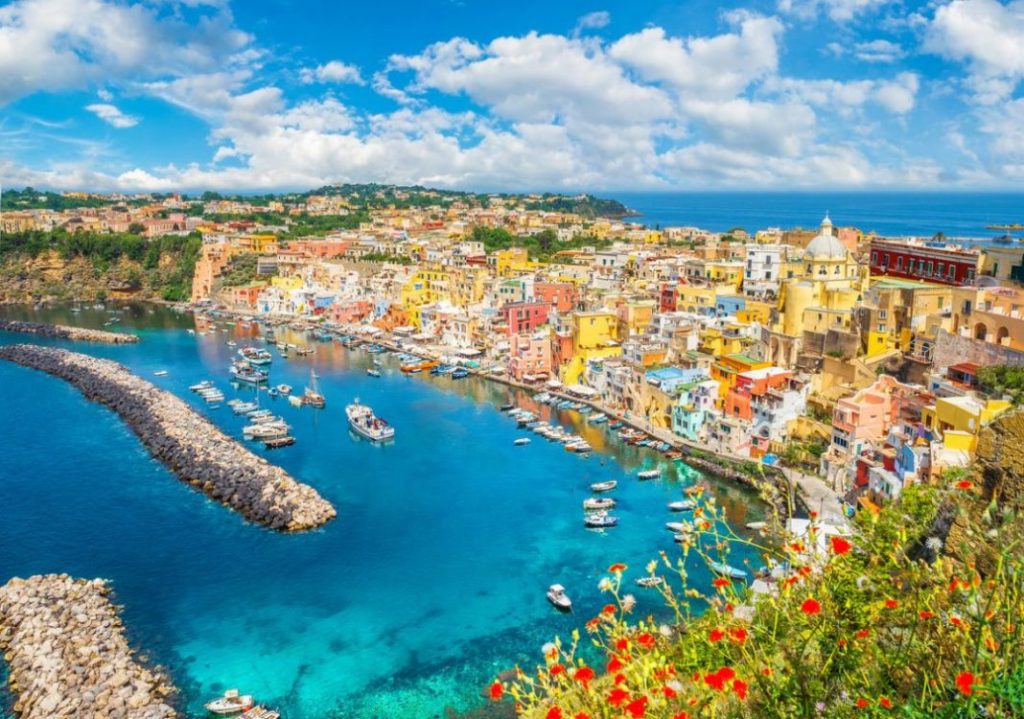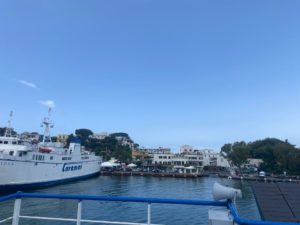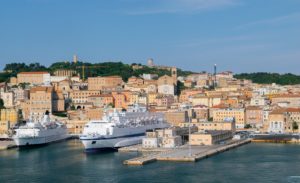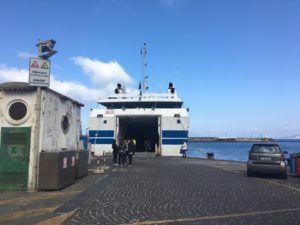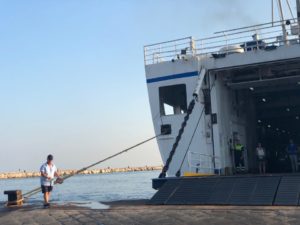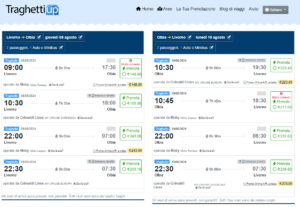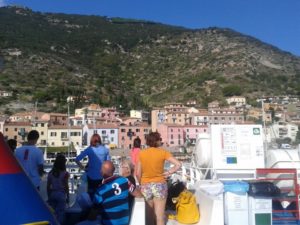Discovering the islands of Procida and Vivara
Procida, the Italian capital of culture 2022, has the possibility, even in the years to come, to share its own cultural development, for economic and tourist growth, but especially for the quality of life. An insular reality of just 3.7 sq km, together with the nearby islet of Vivara, an uninhabited nature reserve, constitutes a single municipal administration that insists on just over 4 sq km. Both are part, like others, of the archipelago, in the Gulf of Pozzuoli, of the Flegrean islands and in ancient times these two were attached: the connecting element was a thin cliff that has disappeared over time. They are currently connected by a recently restored bridge.
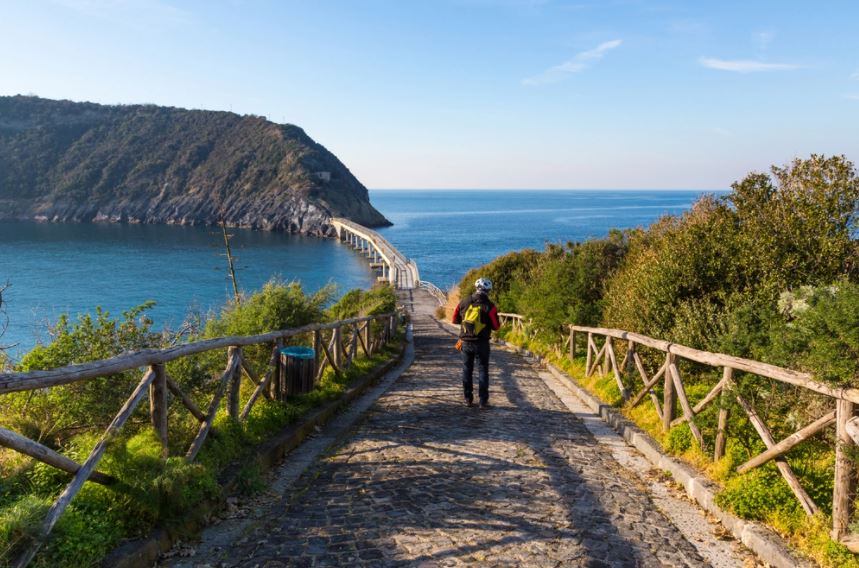
These two island territories, of volcanic origin, shape the offshoots of a real semi-submerged crater with a hemicyclic water mirror, highlighted by the 3 km of the Vivara crescent perimeter, which forms the so-called Gulf of Genito. It is no coincidence that a hypothesis on the etymology would derive the name of the island from the Greek prochyo, which means profuse, to underline its eruptive origin. In fact it consists almost entirely of yellow and gray tuff.
As per tradition, the inhabited center is divided into zones called grancìe, a term with which the monks once called the farms, and then moved on to indicate the territories pertaining to the various churches and monasteries in relation to the Benedictine Abbey Church, the only on which all those of Procida depended. Recently this subdivision has also been re-evaluated at an administrative level and is divided into nine districts: Terra Murata, Corricella, Semmarezio, Sent’cò, San Leonardo, Madonna della Libera, Sant’Antuono, Sant’Antonio and Chiaiolella.
Now there is one more reason to visit it. The Italian capital of culture, in fact, is a city designated annually by the Ministry of Culture. Well, for 2022 the experts have chosen Procida. The planning of the Municipality has provided, with a time schedule that goes from January to the end of the year, cultural projects to be managed in collaboration with the Campania Region. Culture does not isolate, here it invents, inspires, includes, learns, innovates with events. International artists, local communities, tourists, to rediscover roots by consciously projecting themselves into the future and having fun in the present. Performances and artistic workshops, exhibitions, itineraries, shared experiences with widespread events located throughout the island, without neglecting the international dimension; in the name of eco-sustainability, hospitality and inclusion. Performing arts, photography, theater, cinema, literature, training meetings, music even in the open air for a disruptive cultural-based development in which the whole world can participate.
If necessary, you can click on the next link for information on how to reach the island (all routes); the most popular route is Naples ➜ Procida. And here is a series of suggestions, 10 things to do, many ideas, key points and symbolic places, spaces where at any time you can participate in this exemplary, how complex, event, occasionally taking a look at the multiform billboard of procida2022.com in continuous evolution.
1) Stroll through Marina Grande
Marina Grande is both the port of Procida, the landing place for ferries and hydrofoils, and the area in front of it. The seafront where the different pastel colors (yellow, pink, blue, green) of the peculiar multi-storey terraced houses and Palazzo Montefusco stand out, also called Merlato due to the shape of this 12th century building, which before being used as a convent was a royal summer accommodation; it is currently inhabited by residents. Upon arrival it will surely be the first thing that will catch the attention.
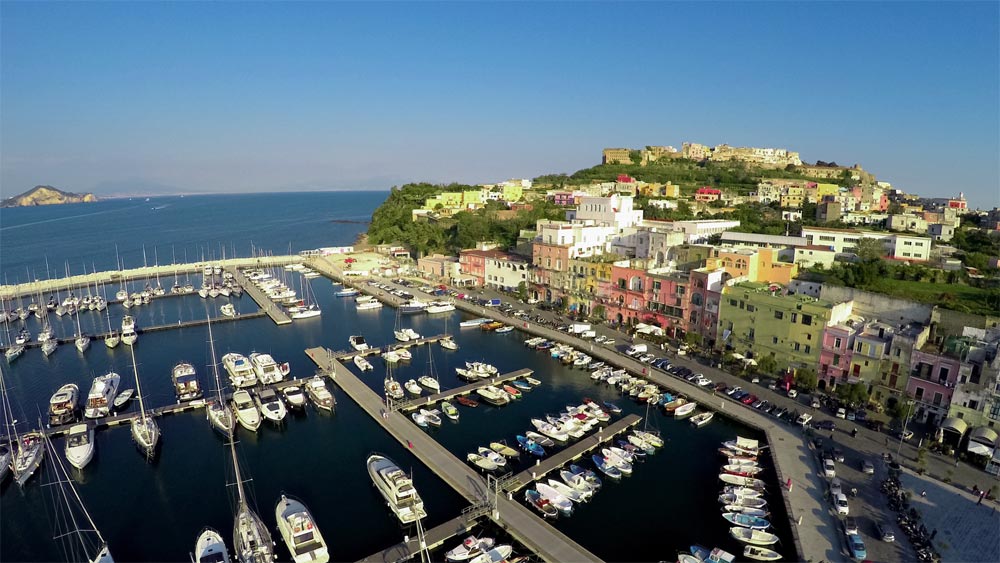
In addition to fishermen who sell their catch directly from moored boats, there are many commercial activities along Via Roma. Walking towards piazzetta Sancio Cattolica you will notice the Church of Santa Maria della Pietà. In 1600 it was a tabernacle created by sailors which in 1760 was enlarged to become the current building overlooking the Marina square. The dome and the bell tower will already be visible from the quay. Inside, there are admirable altars and frescoes.
2) Go to the center (“Grancia” Sant’Antuono)
The center, identifiable in the so-called “grancia di Sant’Antuono“, is Piazza Olmo, the meeting point of many alleys, reachable from the maritime station Via Vittorio Emanuele. Along the way, at the intersection with Via Cavour, you will come across the Church of Sant’Antonio Abate, built in 1606. Inside, as well as the statue of the Saint with the classic pig there are the high altar, the balustrade and paintings from the Solimena school. On the occasion of the relative festivity, the Procidans brought their animals here in procession for the inevitable protective blessing of Sant’Antonio.
3) Go to Terra Murata, the historic center
The historical and cultural center is represented by the ancient village of Terra Murata, so called for the walls that surround this medieval citadel, to access which, after a steep climb, pass through the entrance of the Iron Gate or the Porta di Mezz ‘Omo. It is located about 90 meters above sea level, on which it is perched. During the Habsburg domination of Naples, when Procida was granted as a fief to Alfonso III d’Avalos, the raids of Saracen pirates raged and the Palazzo D’Avalos was built especially for sighting and defense functions. It is a noble castle of 1563 which, in the Bourbon period, became royal to be then transformed first into a military school and then, in 1830, into a prison of the Kingdom. The now former prison functioned as a penitentiary until the late 1980s. In the fortified complex there are also other buildings, a courtyard and an agricultural estate.
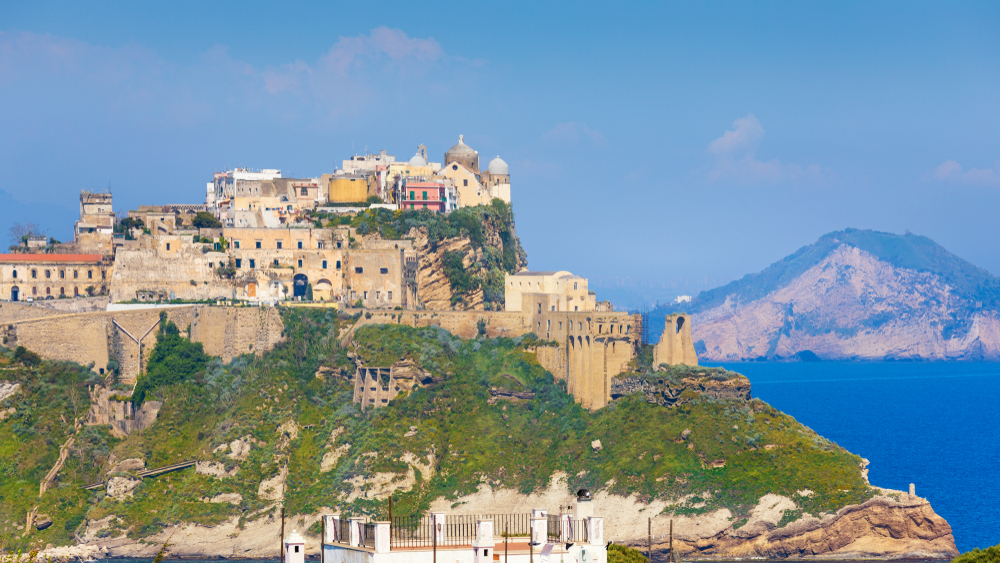
Piazza d’Armi is instead the place where the very interesting Good Friday procession begins, originally organized by the Confraternita dei Turchini, with the statues of the Dead Christ and the Addolorata, the canopy and the funeral marches of the musical band, Rosary Mysteries, the tables of papier-mâché, wood and other materials representing passages from the Old Testament and the Gospel, supported by young people in white robe and turquoise cloak.
Do not miss the panoramic perspective of the gulf visible from the belvedere of Via Borgo. In this area of the neighborhood there is a typical example of local architecture: a three-storey house entirely into the tuff.
The most important building in the historic center is the Abbey of San Michele Arcangelo, the mother church (on the upper floor) with the abbey complex on the lower floor. The patron saint, the protector, is depicted on the wooden and gold ceiling of the central nave. Many other precious masterpieces to admire, such as paintings, statues, marbles, floors, or maybe even to listen to, such as the refined organs. As if that were not enough, on the ground floor there is also a museum where prestigious sculptures and paintings are exhibited, a library containing very rare volumes, a Neapolitan nativity scene from the 1700s. On the lower levels of the complex there are La Segreta and L’Ossario.
On the lower terrace the ecclesial structure of Santa Margherita Nuova stands out towards the Corricella, which includes a church and a convent, buildings that have collapsed and are currently almost completely renovated, and it is the site of exhibitions.
4) Wandering around the Semmarezio hamlets
The granary of Semmarezìo (Santa Maria in dialect) includes four houses from the 1500s but is known above all for the square, which is called the Procida Terrace for the wonderful panorama that can be enjoyed from the bench. In what is now Piazza dei Martiri there is the Church of the Madonna delle Grazie, enlarged in 1679 starting from a pre-existing chapel. Baroque in style, with a Greek cross plan, it contains two precious paintings, one representing the Immaculate Conception with Santa Lucia and San Gaetano da Tiene, the other depicting the Virgin, on the high altar. Religious services are celebrated daily.
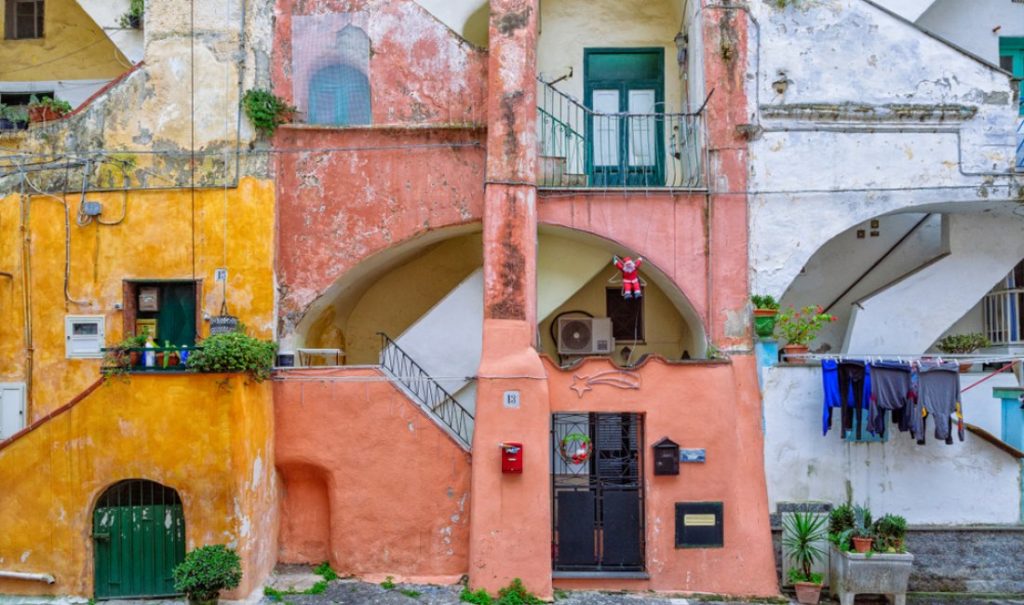
Casale Vascello is the fortified village located at the foot of Terra Murata, and is the largest of the whole granary. There are two entrances and it is a residential agglomeration that dates back to 1600, a time when pirate raids became less frequent. Here too, as in many other places, the presence of the vefio, the characteristic balcony of Arab origin with a vaulted polycentric arch roof, distinguish the building as the colors and the close proximity of the houses. In the central courtyard, where the maze of alleys converges, cultural events are often organized.
5) Go to the beach
On the coast of Silurenza, next to the ferry terminal, we find the beach of Grotte, equipped, of sand, characterized by the presence in the vicinity of quarries in the tuff, used as storage for boats or warehouses. And, on the opposite side, next to the tourist port, the free beach of Lingua, pebbles, also reachable via an ancient staircase next to the Torre di Tabaia, with the possibility of renting umbrellas and deck chairs at the bar, to be arranged independently. Then there is the beach of the Asino, the one mentioned in the book “L’isola di Arturo” by Elsa Morante.
The famous beach of Pozzo Vecchio is the one where some scenes of “Il Postino” were shot, with Massimo Troisi, and for this reason also is called as the title of the film. Framed in the wilderness, however, it can be easily reached by walking.
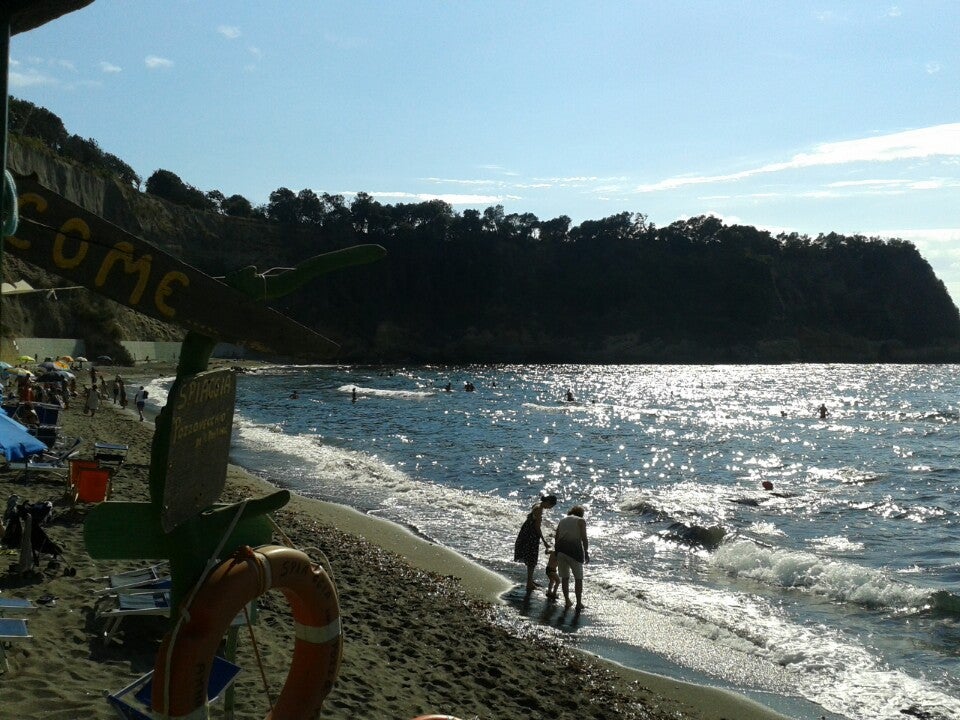
The beaches of Ciraccio and Ciracciello are separated only by two small stacks. On the same coast, the longest of Procida, there is also the beach of Punta Serra. On the western side you reach the small beach of Marina Chiaiolella, near the tourist port of the same name, consisting of the crater of a submerged volcano.
Chiaia beach, between Punta Pizzaco and Punta dei Monaci, is free for a stretch and for another under concession to bathing establishments. The sand is the typical local one, fine and dark, and the seabed is shallow and sloping, but getting here is a bit tiring due to the many steps to be taken. However, there is the alternative of the boat service.
6) Navigate along the coast
Renting a boat you can sail along the coast around the island, but you must pay attention to the rules of the Regno di Nettuno marine protected area; or, alternatively, choose to let yourself be guided by the local boatmen with tours organized on exclusive boats or to be shared in a group.
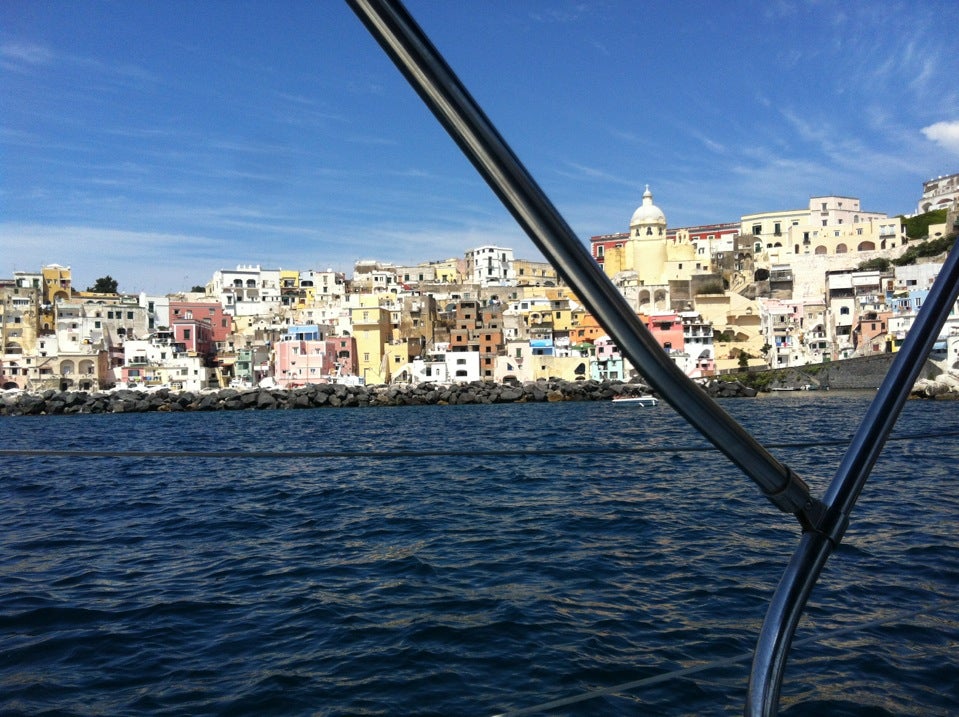
Depending on the captain, stops are provided in all bays and lunch on board or the possibility of swimming is also given. The circumnavigation can also be done at night with a particular boat with a transparent and bright bottom, ideal for admiring both the flora and the fauna. Both day and night you can even go with a semi-submarine. Or, in the evening, let go of the moorings from a fishing boat, to directly experience of fishing. Do not miss the opportunity to drink an aperitif at sunset, overlooking the Corricella, spending two hours listening the music in good company in the middle of the sea with a boat that can be booked for a couple or a small group.
If you prefer to sail the seas independently you can also consider renting a kayak.
7) Walk around Marina Corricella
The oldest seaside village in Procida, without vehicular traffic, is that of Marina Corricella. On the dock of the fishermen’s harbor, which also supply the few small restaurants in the area, there is an architectural complex dating back to the 17th century. The etymology of the term Corricella is Greek: chora kalè, or beautiful district. An ideal place for walking, breathing brackish air and admiring historical beauties also because the houses are even more dated.
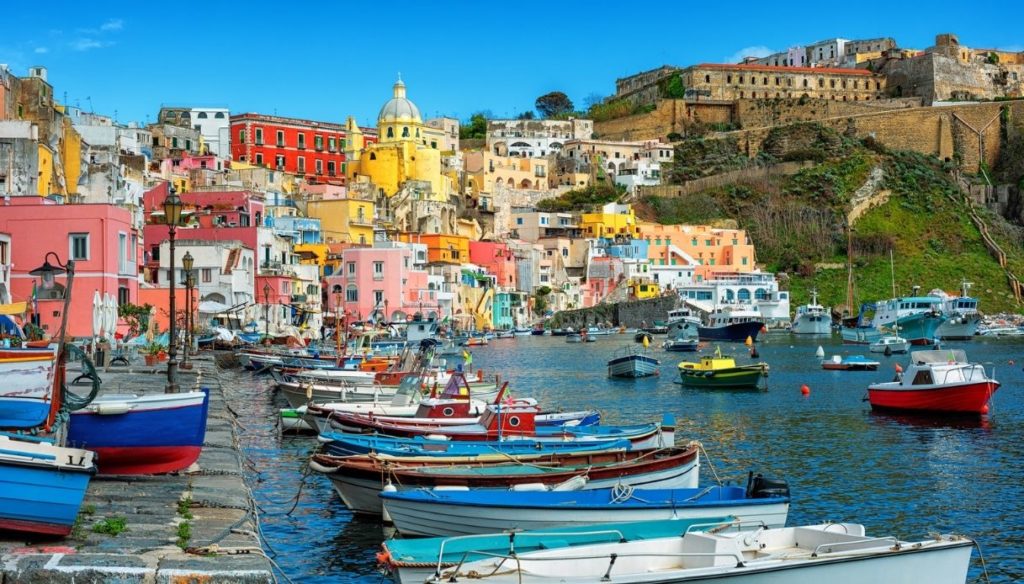
You’ll see also special windows and stairs such as the two pedestrian entrances: the steps of the Pennino and the dark steps. After the shooting of the feature film inspired by the novel Il postino di Neruda, the square was named after Troisi. In this area, precisely in the church of San Tommaso d’Aquino, there is the Congregation of the Immaculate of the Turchini, a religious lay group belonging to the Confraternities.
8) Visit the Museum of the Sea, the “Casa di Graziella” and the Civic Museum
In the historic building of the “Francesco Caracciolo” Nautical Institute, in Via Principe Umberto, originally created for educational purposes, the Sea Museum has been open to the public since 1997, an exhibition area and a paradigmatic library of the maritime traditions of the Procidan people, composed mainly by captains, sailors and fishermen. A historical and religious archive linked to the sea, both of documentation and of navigation instruments, octants and sextants, hygrographs and compasses.
In Terra Murata, on the upper floor of the Palazzo della Cultura (ex conservatory of the orphans) you can visit the Casa di Graziella museum, a female name that entitles the 1852 novel by Alphonse de Lamartine, focused on the journey during which he met this young woman, who represents now the emblem of the Procidan woman, with a simple and lovingly wild beauty.
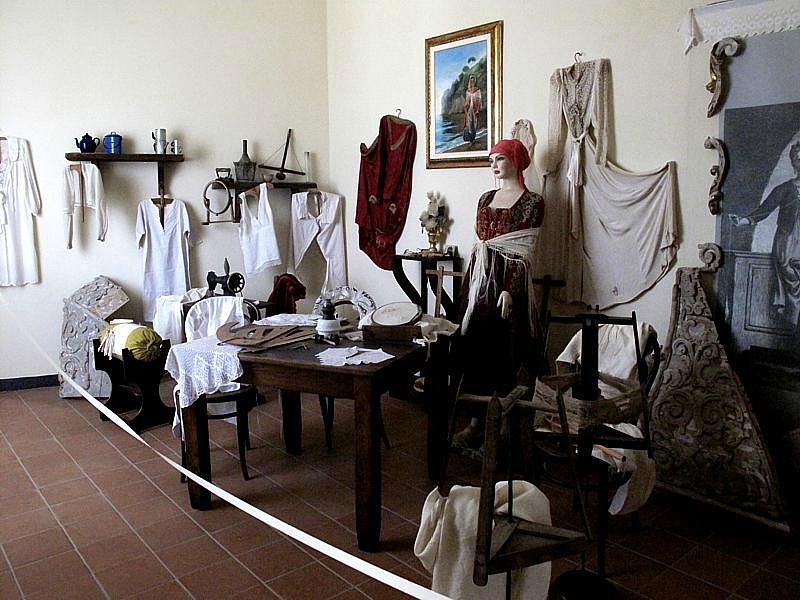
The writer stayed here for about a year, from 1812 to 1813, and fell in love with this girl, to whom he later dedicated the book. The time spent together working coral or reading in the fishermen’s house where the young orphan lived with her grandparents and brothers is indelible in his memories. A few years after the artist’s departure, who had promised to return, the girl gets sick and sends him a letter containing a braid of her own. Even if they won’t meet yet, the romance is perpetuated in the literary artwork.
The Civic Museum (archeology, geology, environment, sea), however, is now in a phase of reorganization.
9) Explore Solchiaro
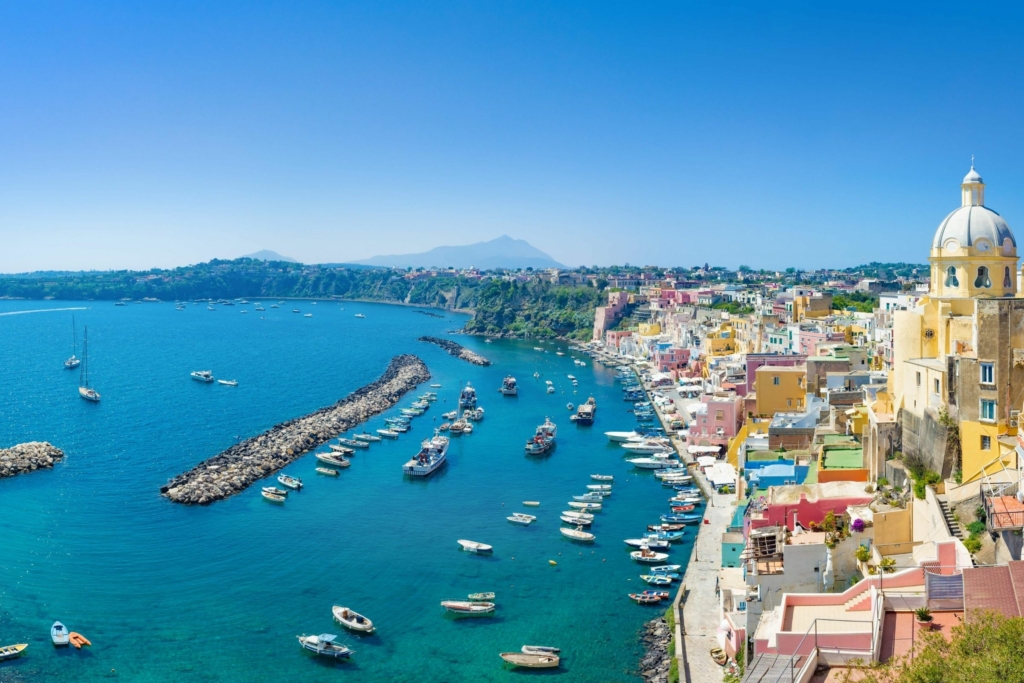
Punta Solchiaro is the southern promontory of the island, reachable along the path of the homonymous road, which runs along the entire perimeter of this tapered end. The gardens of the villas alternate with the rich Mediterranean vegetation. You will come in sight of scenarios that are tinged with blue more than once and see the other islands of the archipelago or towards the mainland.
10) Enjoy the Procida food and wine
The strong point of local food and wine is the cuisine, with its marine – fish – and agricultural – artichokes, lemons, aubergines, green peppers, tomatoes and other vegetables grown in the parule, the irrigated gardens connected to aquifers that emerge through artesian wells. Marina Chiaiolella artichokes are very large and tasty, often used as an accompaniment to paccheri – type pasta, together with capers, black olives and toasted bread crumbs, and in other preparations such as artichoke salty cake or in oil. The fertile volcanic soil gives big lemons with the white part, the one between the pulp and the skin, incredibly thick, used, as well as as a condiment, as the main ingredient of the salad, in jams and liqueurs.
Lots of blue fish on the tables, such as anchovies, marinated or with pasta and fried peppers; fried fish, but also octopus, squid, cuttlefish, seafood and mantis shrimp.
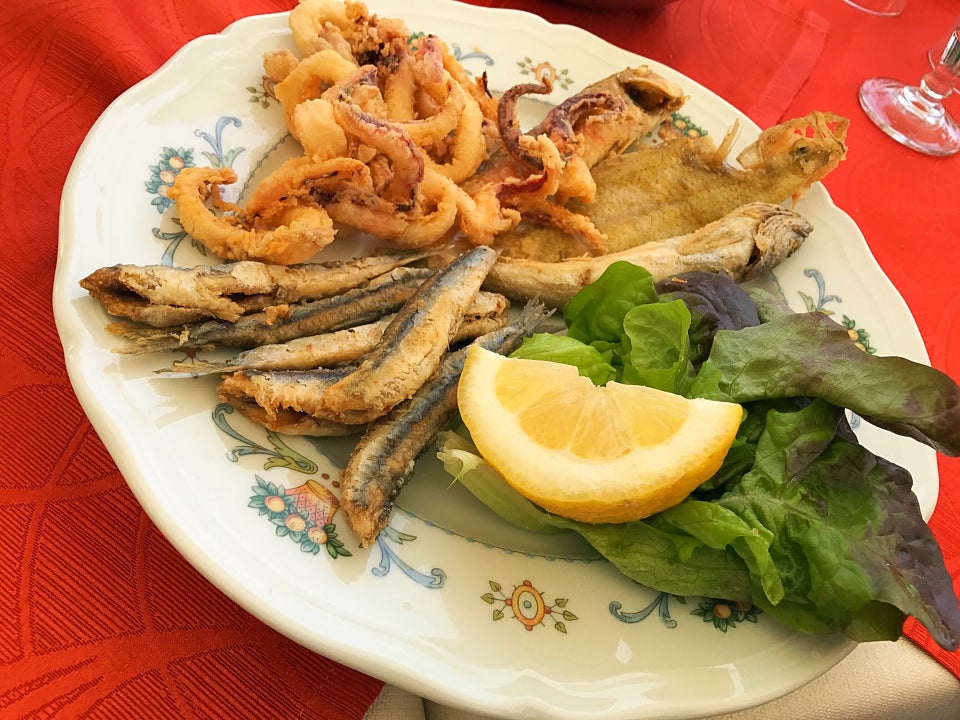
Rabbit is also part of the local culinary culture, which does not differ much from that cooked in the Ischian style; in fact, it differs only for the aromatic herbs used and because it is not first browned but cooked only on a low heat. After all, also on the islet of Vivara, as on the neighboring island of Ischia, once lived small rabbits in the wild.
For dessert or for breakfast the peculiar tongue, the sweet with cream and lemon flavor, wrapped in the puff pastry.
As for the winemaking tradition, today it does not go beyond its own production and has not expressed wines with a designation of origin or typical geographical indication. But one of the historic vineyards has recently brought together precious white grapes at zero km in the Campi Flegrei winery. Otherwise, they would not be the first white berried grapes of the local vines that are used in the Phlegraean wine, in particular in the DOC Falanghina.

